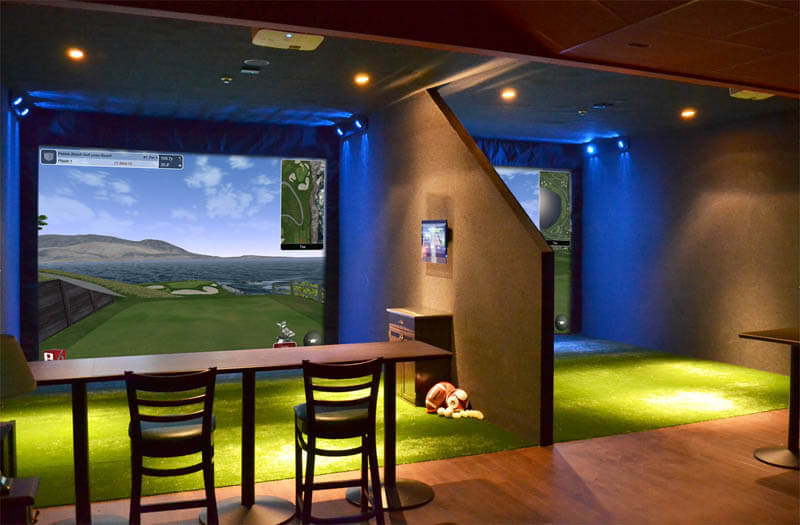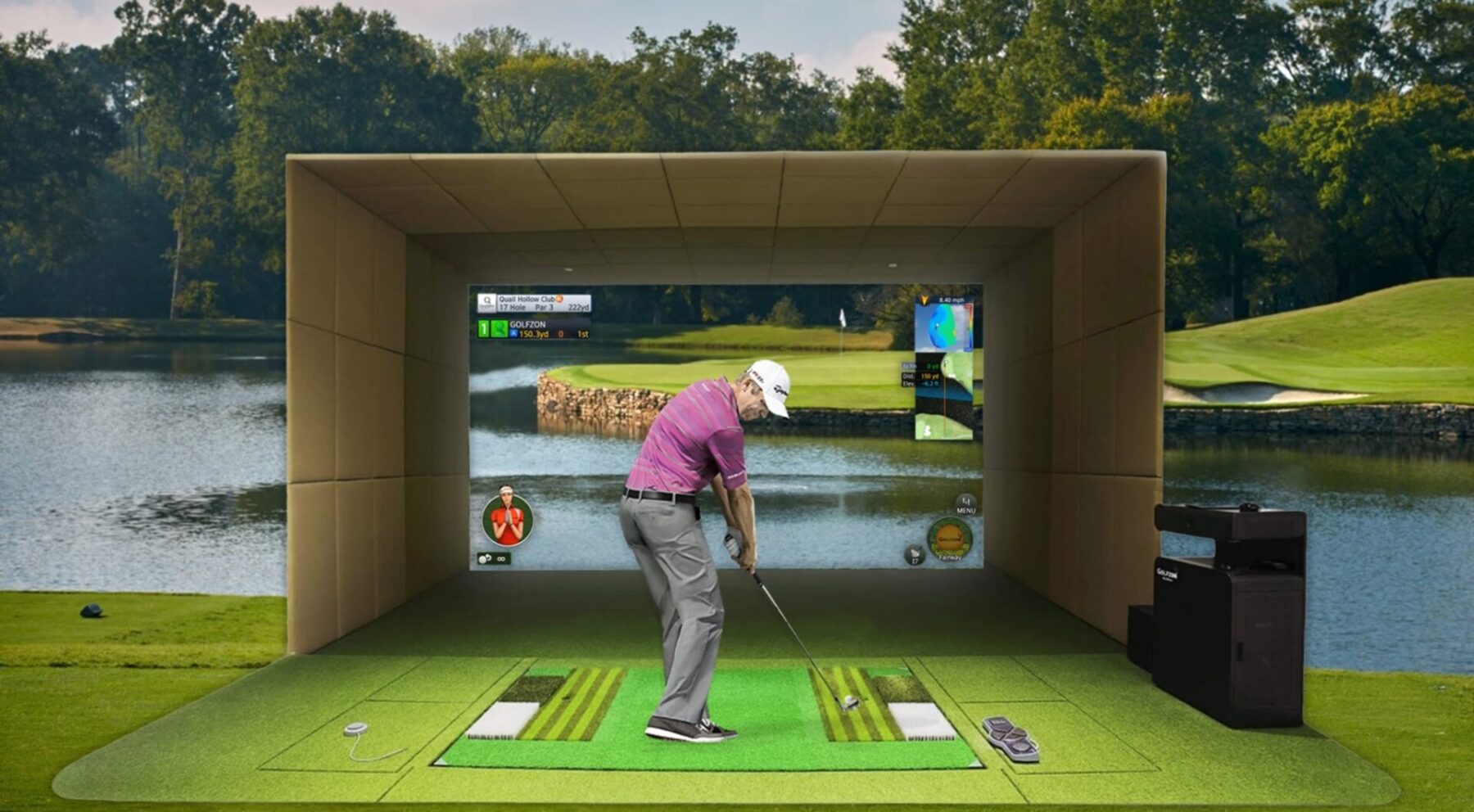In 2012, Lem Clevenger entered a golf simulator facility for the first time. What Clevenger didn’t realize was this curiosity visit would open the doors to him starting an online business venture that is still going strong today.
Since Clevenger’s initial exposure to the golf simulator industry a decade ago, the Glen Allen, VA, business analyst has helped dozens of simulator owners around the world. Clevenger’s Yardstick Golf business model helps new and long-standing simulator entrepreneurs get on the right track.
Clevenger’s unique approach to helping others is in the form of providing his research, a business plan, and cost projections for free. Once a new golf simulator business owner opens their doors, Clevenger provides clients the opportunity to maintain an ongoing relationship. This partnership includes the latest in simulator research, a connection to a business forum with other entrepreneurs, and the benefit of what he’s learned regarding website SEO and affiliate advertising.
Q: How did your foray into the world of golf simulators begin?

A: I was having lunch with my in-laws in Tampa, and I noticed a golf simulator business located across the street. After lunch I walked into the simulator business and began talking to the owner. This was just prior to the grand opening, and the owner shared what his plan was. As a business analyst and golf enthusiast, I saw the potential for opening a simulator enterprise.
Q: What prompted you to help guide others into owning a golf simulation business?
A: While conducting my research, it became apparent that the assumptions about the number of rounds played drove the business. Most of the simulator manufacturers had Return on Investment (ROI) models showing expected utilization of 70 to 80 percent per year. But they were unable to show or share actual results. They also couldn’t provide data on the impact of weather and surrounding population. I began creating a survey that collected this information and provided a copy to my participants.
I found that these ROIs models were overstated. I also was able to evaluate data on weather, golfers within a 10-mile radius, bank financing, food and beverage strategy, and area home prices. All these factors helped to build a forecast for expected golf simulator utilization.
Q: Did you feel like you were on to something valuable with the data you were collecting?

A: Based on my information collected, I felt I could build a community and continue gathering data that owners would find useful. I built a website and started selling the research and business model. I believe Yardstick Golf saves people money long-term.
Q: How does Yardstick Golf work for someone interested in utilizing your services?
A: I initially provide a free business plan template for starting an indoor golf business. This introduction to Yardstick Golf is a good way to let people see the quality of my product and give them a starting point in their research. It also points out the places where the paid research down the road will help them in their long-term planning process. Many of my sales are to people who’ve downloaded our free business plan.
Q: How big is the indoor golf simulation industry?
A: According to Straits Research, the golf simulator market was valued at $1.3 million in 2021. It’s projected to reach $3.38 million by 2030.
Q: How has your business and the industry evolved since you started in 2013?

A: Over the years I’ve learned a lot more about using digital marketing to get the message out. This knowledge has greatly increased my visibility and website traffic. It’s also expanded my network. I’m also learning about what others are doing in the golf industry. My business forum now has close to 10,000 followers that share information on golf simulators. This forum has served as a great source of information and inspiration.
Q: What are the top simulators you’d recommend?
A: I would break my answer down into a couple of different groups. The first would be commercial versus home golf simulators. On the commercial side, I would say the best are Full Swing, TrackMan, and Golfzon. Depending on options and packages, these can run from $20K to over $100K. Which one you pick really depends on what you are trying to accomplish.
When it comes to home simulators, I tend to think of them in three groups: affordable, premium, and luxury. Affordables are typically under $1000 and include models like Garmin, Mevo, Swing Caddie, and OptiShot. Think of these as entry level, and they offer the fewest options.
Premium simulators are a step up, and these are commonly purchased in a set. SkyTrak, Foresight, and Mevo Plus are the most popular in this category. They tend to be more accurate and come with more bells and whistles.
The luxury end starts to approach commercial simulator quality. Today you’re seeing these options used in both business and home applications. Foresight and TruGolf perform well and have fantastic owner feedback.
Q: Is there a business success story that you’d like to share?

A: One of my most recent customers opened a facility in Ohio called Clubhouse No.3.
They used our benchmarking to support their business planning process. On an international level, Goin’ Golf in England leveraged our research to help plan their facility.
Q: If you knew in 2013, what you know now about the golf simulator industry, is there anything you’d do differently?
A: In the beginning, the industry focus was on golf. This mindset has changed, and today it’s more about making the simulation environment an entertainment venue.
I would also go back and invest more time into creating content that would help get the message out about this business. I would’ve done more to nurture an email list and focus on building relationships.
Q: In 2022, what is the latest in golf simulator technology?

A: For a long time, putting has been a major weakness in golf simulation. A couple of manufacturers are changing that. Full Swing Golf and PuttView each have a virtual green that can change slopes to match conditions on the course you are playing. They also have some cool features for projecting the break of the putt, as well as aiding in green reading.
For home simulators, there is now the option for competing with others online.
Q: Have you heard of one facility in the U.S., or the world, that is currently the ultimate golf simulator environment?

Currently, I think of Topgolf and Drive Shack as the two premier facilities. They provide an amazing atmosphere and do a great job engaging players at all skill levels. They deliver a great blend of golf, technology, and entertainment value.
Also, Tigers Woods and Rory McIlroy recently confirmed that they are launching TMRW Sports. This is a technology focused venture intended to stage stadium-based golf events that appears to be like a golf simulator on steroids.
Q: Thanks for your insights. Is there anything else you’d like readers to know about Yardstick Golf?
A: Besides selling indoor golf startup plans and research, we offer a free golf simulator planning tool you can download for free on our website.







